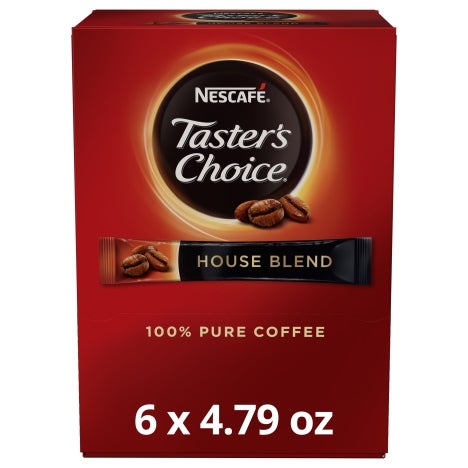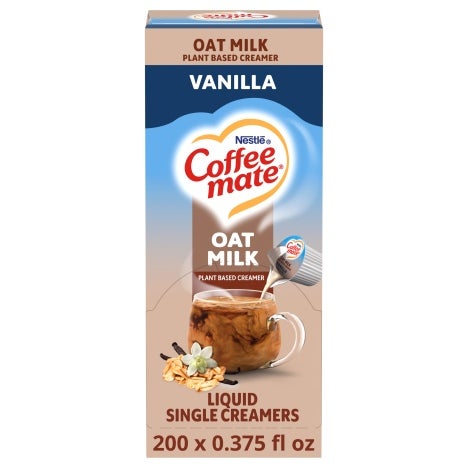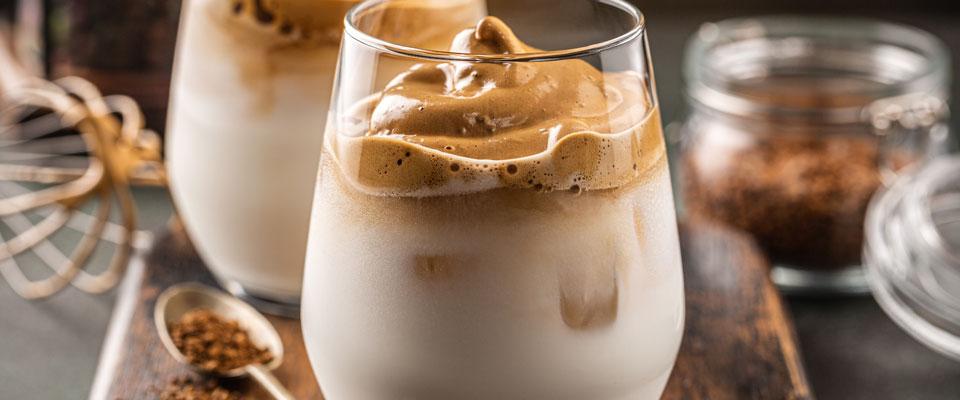
Sell More Iced Coffee and Iced Tea with Customized Offerings
Beverage customers look forward to a moment of refreshment each day. Here’s what’s trending in cold coffee and iced tea to keep them coming back.
Cold coffees and iced teas are more than just beverages. For many customers, they’ve become a much-anticipated part of everyday life—a few minutes to escape from the daily grind with a refreshing, delicious indulgence.
Part of what customers love most about cold coffee and iced tea is the ability to customize their beverage. They’re available in an increasing variety of flavors and styles that can be enhanced with a growing array of add-ons, from creamers—both dairy and plant-based—to trending syrups, foams, and add-ins.
Here are 14 beverage menu ideas to help boost sales of your cold coffees and iced teas.
Cold Coffee
- For an easy cold coffee creation, just add sparkling water. Sparkling coffee is easy to prepare. Simply mix espresso and sparkling water with cold brew or cooled coffee over ice.
- Add cold foam, whipped cream, sprinkles, or cookie crumbles. Some consumers visit a restaurant solely for an item they see on social media such as over-the-top coffee. And, while cold foam is normally made with nonfat milk, it can also be made dairy-free with plant-based milk.
- Differentiate your cold coffee with cutting-edge hot coffee flavors and styles. These include toffee, almond, dark chocolate, cardamom, spiced, Brazilian, Indonesian, Thai, and ginger.
- Popular cold coffee-specific ingredients and flavors include honey, pecan, chicory, apple, almond, crème brûlée, coconut, butterscotch, caramel, white chocolate, and marshmallow.
- Offer plant-based creamer. Offering both dairy- and nondairy-based creamers will appeal to a broader audience. Oat milk usage in cold coffee is growing in popularity and is being used as often as almond milk.
- Consider offering flavored creamers or syrups as an easy way to expand flavor offerings. As seasonal offerings like gingerbread and pumpkin continue to expand, the appeal of innovative flavors continues to grow year-round.
- Have hot cocoa mix on hand? Use it to make a delicious, iced mocha. Take espresso or fresh brewed coffee, add the cocoa, and then stir in milk or cream, and ice.
Iced Tea
- Half lemonade, half iced tea drinks, continue to be popular. They combine two of the cold drinks Americans adore the most, and they continue to grow in popularity each year.1
- Attract younger customers by promoting functional ingredients. Consider offering teas that provide extra benefits. One coffee chain menus a tea made with B vitamins and energy from green tea extract. Another features green tea and lemonade with caffeine from coffee plus guarana and ginseng. Explore offering enhanced waters, lemonades, teas, and juice blends.
- Create iced teas using today’s top hot tea flavors, including green tea, lemon, raspberry, peach, chai, mango, orange, strawberry, ginger, apple, and honey.
- For iced tea, trending ingredients, styles, and flavors include: CBD oil, hops, taro, coconut, turmeric, melon, cheese tea, pineapple, lavender, Thai iced tea, milk tea, cherry, rooibos, apple, watermelon, jasmine tea, pear, lychee, guava, ginseng, rose, and barley.
- Consider featuring nonsweetened fruit flavors like strawberry, mango, tropical, and peach, which have experienced increasing appeal.
- Feature afternoon/evening discounts on iced tea purchases. The share of away from home evening occasions has increased, so consider offering evening promotions to entice consumers looking for an evening treat.
- Consider offering guests “next-level” varieties of honey. Hot honey, with its spicy kick, has been growing across menus. Fueled by innovation, and demand for more natural sweeteners, honey is expected to grow 9% on menus over the next four years.2
Sources: 1. Technomic Ignite Cold Beverage U.S. Menu Trends (Q4 2021). 2. Datassential Trends to Know: Honey (April 2022).
The information provided is based on a general industry overview and is not specific to your business operation. Each business is unique, and decisions related to your business should be made after consultation with appropriate experts.







